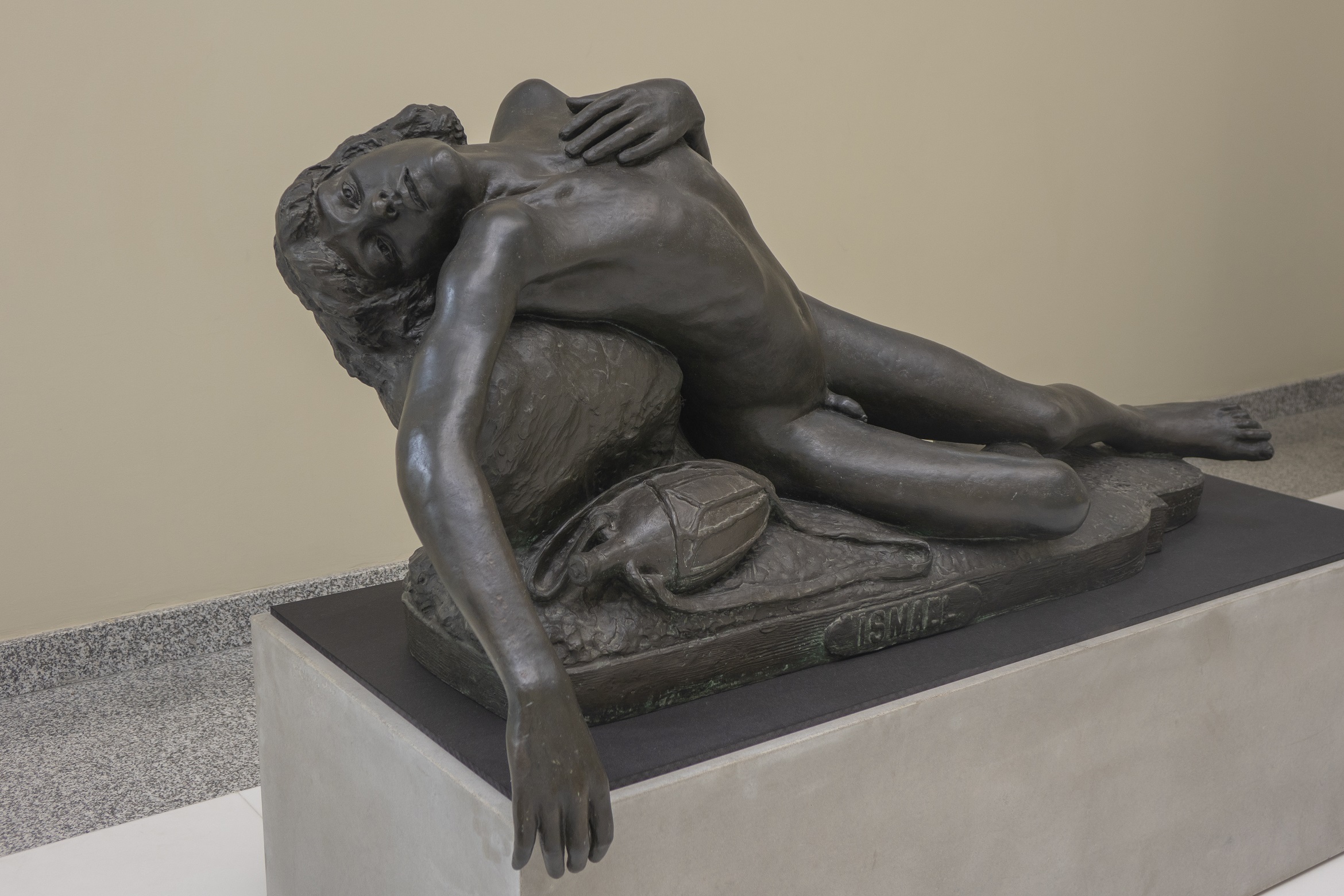A naturalistic and symbolist sculptor, who signed his artworks as Augusto Santo, had a brief and troubled career. A constantly dissatisfied man, Augusto Santo destroyed part of his sculptural production.
Born in Coimbrões, Vila Nova de Gaia, on April 1, 1869, he attended the Porto Academy of Fine Arts between 1882 and 1889, being a fellow student and rival of António Teixeira Lopes (both enrolled on October 20, 1882).
In 1891, Augusto Santo acquired the tools of the deceased master Soares dos Reis, before continuing his studies in Paris, where he settled for three years, enjoying a private subscription from the benefactor Joaquim Fernandes de Oliveira Mendes.
In Paris, he settled in Rue Denfert-Rochereau, where other Portuguese artists such as Teixeira Lopes, the son, resided. He contacted the Parisian artist Alexandre Falguière (1831-1900) and various compatriots, including writers Eça de Queiroz (1845-1900) and António Nobre (1867-1900), painters Carlos Reis (1863-1940) and Amadeo de Souza-Cardoso (1887-1918), and the historian and art critic José de Figueiredo (1872-1937).
In 1893, with the end of financial support and lack of results, Augusto Santo was forced to return to Portugal. He then began working in his studio in Coimbrões and frequented the cafés of Praça Nova in Porto, where he met intellectuals like Pádua Correia and Manuel Laranjeira, who described him as a sad face, a sleepwalking misanthrope in the crowd.
Among the few surviving artworks from the destruction, the sculpture “Ismael” stands out, a final proof of his course at the Porto Academy of Fine Arts, dated 1889. The original, in plaster, is preserved at the Soares dos Reis National Museum, where the bronze cast is exhibited.
Augusto Santo died at Santo António Hospital in Porto on September 26, 1907, a victim of tuberculosis.

